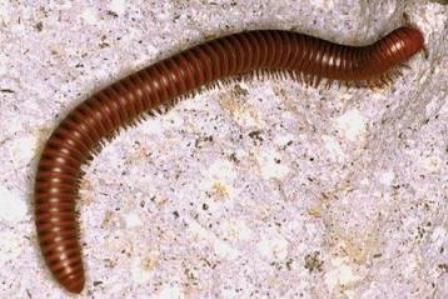|
Millipedes
View more pictures: Bing Images Google Images Yahoo Images Common names: Millipedes Scientific name (Class): Diploda Region: Throughout North America and Europe Life cycle: One generation per year. The adults spend the winter in the soil. Physical Description: Brown to pinkish-gray and up to 1/2 inches long. The body is wormlike with many segments and two or more legs per segment. The number of segments is increased with each molt. Sexual maturity is reached after seven to ten molts, taking place within two to five years. Full-grown adults no longer molt. The sticky eggs are transparent, laid in cluster on or in the soil. Similar Insect: Eastern Field Wireworm Feeding characteristics: Diplodae generally feed on decaying plant material, but may attack roots and lower stems of plants to obtain water in dry spells. They may enter fruit laying on the soil surface is damp. Once the they start feeding they may not stop, because they relish the sugar in the sap. A fungal disease may follow attacks. Controls: Peat compost is not favorable to this pest than those containing leaf mold or rotting manure. Pouring tobacco tea unto the soil for serious infestation. You may try Parasitic Nematodes, though this method has not been thoroughly tested. Return from Millipedes to Insects M-P Encyclopedia of Garden Insects |
